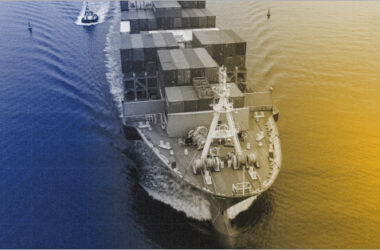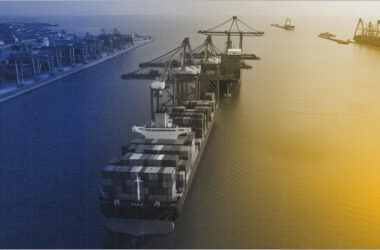Marine Insurance Policy is a crucial aspect of the maritime industry, as it helps to protect ship owners and operators from financial losses that can arise from a variety of risks, including damage to the vessel, cargo, and crew. There exist several key elements of Marine Insurance Policy that are important to understand. Understanding these elements is essential for anyone who owns or operates a marine vessel, as it can help to ensure that they are adequately protected in the event of a loss. It is also important for insurance brokers and underwriters, who need to be knowledgeable about the various aspects of marine insurance policy in order to provide the best possible coverage for their clients. So, let’s set sail into the world of maritime risk management and insurance!
Fundamentals of Marine Insurance
Marine Insurance is a type of insurance policy that protects against loss, damage, or theft of goods and carriers during transportation by sea or by any other mode of transport. It is an essential component of international trade and commerce, providing financial protection to both the shipper and the receiver of goods.
Purpose of Marine Insurance
The primary purpose of Marine Insurance is to provide financial protection against the risks of loss, damage, or theft of goods and carriers during transportation. It also covers other risks such as war, piracy, and natural disasters. Marine Insurance Policies are typically tailored to the specific needs of the shipper and the type of cargo being transported.
Types of Marine Insurance
There are several types of Marine Insurance Policies, each designed to meet the specific needs of the shipper and the type of cargo being transported. Some of the most common types of Marine Insurance Policies include:
- Hull Insurance: This type of insurance covers the body of the vessel/ship.
- Cargo Insurance: This type of insurance covers the cargo against loss, damage, or theft during transportation by sea.
- Freight Insurance: This type of insurance covers the loss of income that may result from damage to or loss of cargo during transportation by sea.
- Liability Insurance: This type of insurance covers the shipowner against claims for damage or injury caused to third parties during transportation.
Overall, Marine Insurance is a crucial component of international trade and commerce, providing financial protection to both shippers and receivers of goods. It is essential to understand the different types of Marine Insurance Policies available and choose the one that best meets your specific needs.
Key Elements of Marine Insurance Policy
Marine Insurance Policies are complex contracts that provide protection to the insured party against various risks that may arise during a marine adventure. The key elements of a Marine Insurance Policy are as follows-
Declaration
This section outlines the basic details of the policy, including the names of the insured parties, the subject matter insured (e.g., vessel, cargo, or liability), the coverage period, and the policy number. The insured party is the individual or entity that purchases the Marine Insurance Policy. This can be the owner of the vessel, the cargo owner, or any other party with a financial interest in the marine adventure.
Covered Risks
The Marine Insurance Policy covers various risks that may arise during the course of a marine adventure. These risks may include damage to the vessel or cargo, loss of cargo, liability for damage to third-party property, and liability for injury or death of third parties.
Policy Limits
The policy limits refer to the maximum amount that the insurer will pay out in the event of a claim. The policy limits may vary depending on the type of coverage and the needs of the insured party.
Premiums
The premium is the amount paid by the insured party to the insurer in exchange for coverage under the Marine Insurance Policy. The premium may vary depending on the type of coverage, the value of the vessel or cargo, and the level of risk involved.
Voyage or Transit Details
This section specifies the voyage or transit route covered by the policy, including the departure and arrival ports or locations. It may also include information about any deviations or extensions of the voyage.
Valuation and Sum Insured
The policy will specify how the insured value of the subject matter is determined. For vessels, this can include the agreed value, market value, or other valuation methods. For cargo, it may be based on the cost, invoice value, or market value. The sum insured represents the maximum amount the insurer will pay in the event of a covered loss.
Deductibles
Deductibles are the amounts that the insured must pay out of pocket before the insurance coverage comes into effect. Higher deductibles can result in lower premiums.
Exclusions
This section lists the perils, circumstances, or conditions that are not covered by the policy. Common exclusions may include acts of war, intentional damage, and wear and tear.
Claims Procedures
The policy details the steps to follow in the event of a claim, including the timeframe for reporting and documenting the loss, as well as the procedures for claims settlement.
Subrogation
This clause explains the rights of the insurer to pursue claims against third parties responsible for the loss after they have paid out a claim to the insured.
Termination and Cancellation
The policy may outline the conditions under which the insurer or the insured can terminate or cancel the policy.
Claims and Compensation in Marine Insurance
Marine Insurance Policies provide coverage for various risks associated with transportation, such as damage to the cargo, loss of the vessel, and liability for third-party claims. In case of an insured event, the policyholder can file a claim with the insurer to receive compensation for the losses incurred. The claim process and compensation calculation in marine insurance can be complex and involve multiple parties.
Claim Process
The claim process in Marine Insurance typically involves the following steps:
- Notification: The policyholder must notify the insurer about the loss or damage as soon as possible, providing details of the incident, the extent of the loss, and the estimated value of the claim.
- Survey: The insurer may appoint a surveyor to assess the damage or loss and verify the claim. The surveyor may also investigate the cause of the incident and determine if any exclusions or limitations apply.
- Documentation: The policyholder must provide all necessary documents to support the claim, such as bills of lading, invoices, and certificates of insurance. The insurer may also request additional information or evidence to validate the claim.
- Settlement: Once the insurer approves the claim, it will offer a settlement amount based on the policy terms, the value of the insured property, and any deductibles or excesses applicable. The policyholder can accept or negotiate the settlement offer, or dispute it through arbitration or litigation.
Compensation Calculation
The compensation calculation in Marine Insurance depends on various factors, such as the type of coverage, the insured value, and the cause of the loss. Some common methods of compensation calculation in Marine Insurance include:
- Actual Cash Value: This method calculates the compensation based on the market value of the insured property at the time of the loss, minus any depreciation or wear and tear.
- Agreed Value: This method sets a fixed value for the insured property, which is agreed upon by the policyholder and the insurer at the time of the policy inception. The compensation is then based on the agreed value, regardless of the actual market value or condition of the property.
- New for Old: This method provides full compensation for the insured property, regardless of its age or condition, as long as it is replaced with a new or equivalent item.
The claim process and compensation calculation in Marine Insurance can be complex and require expertise in maritime law, insurance regulations, and risk management. Policyholders should carefully review their policy terms and seek professional advice to ensure proper coverage and fair compensation in case of an insured event.
Conclusion
In conclusion, a Marine Insurance Policy is a contract between the insurer and the insured, which provides protection against the risks associated with marine transport. It is essential for the insured to carefully read and understand the terms and conditions of the policy before signing it. Failure to comply with the conditions and warranties may result in the insurer denying the claim. Therefore, it is crucial to ensure that the policy provides adequate coverage and that the insured complies with all the requirements of the policy. Overall, a marine insurance policy is a vital tool for protecting the financial interests of the insured against the risks associated with marine transport. By understanding the various elements of the policy, the insured can make an informed decision about the coverage that they need and ensure that they comply with all the requirements of the policy.
Frequently Asked Questions (FAQs)
1. What are warranties in a Marine Insurance Policy, and why are they important?
Warranties are specific conditions that the insured must adhere to in order to maintain coverage. Compliance with warranties is crucial because failure to meet them can result in the policy being voided.
2. How does a Marine Insurance Policy handle situations involving general average and salvage?
The policy typically outlines how costs related to general average and salvage operations are shared among all parties involved. It can specify the insured’s obligations in such situations.
3. What is the concept of subrogation in Marine Insurance and how it works?
Subrogation allows the insurer, after settling a claim, to pursue claims against third parties responsible for the loss. This is a way for the insurer to recover the amount it paid to the insured. Subrogation rights are typically outlined in the policy.







